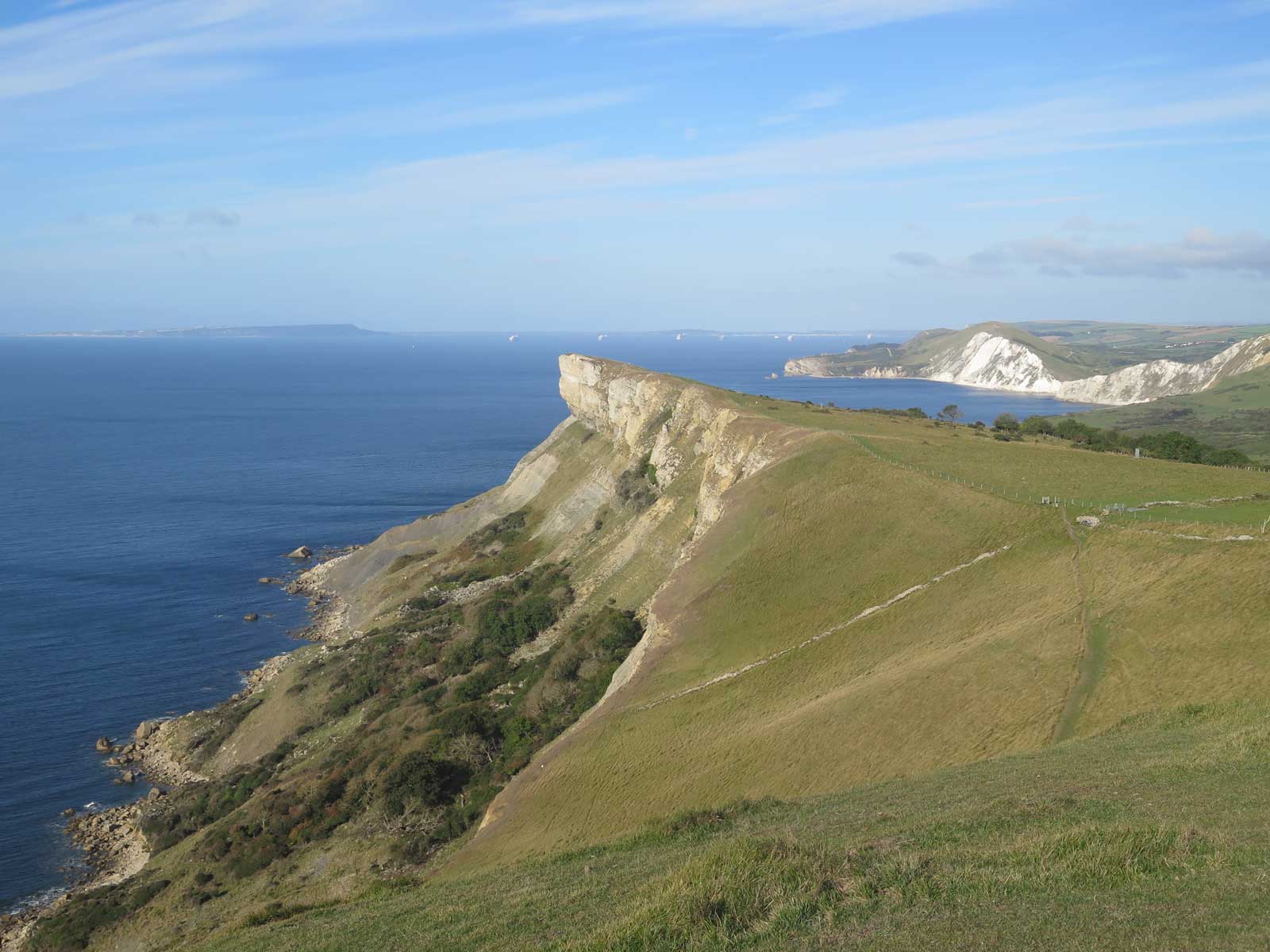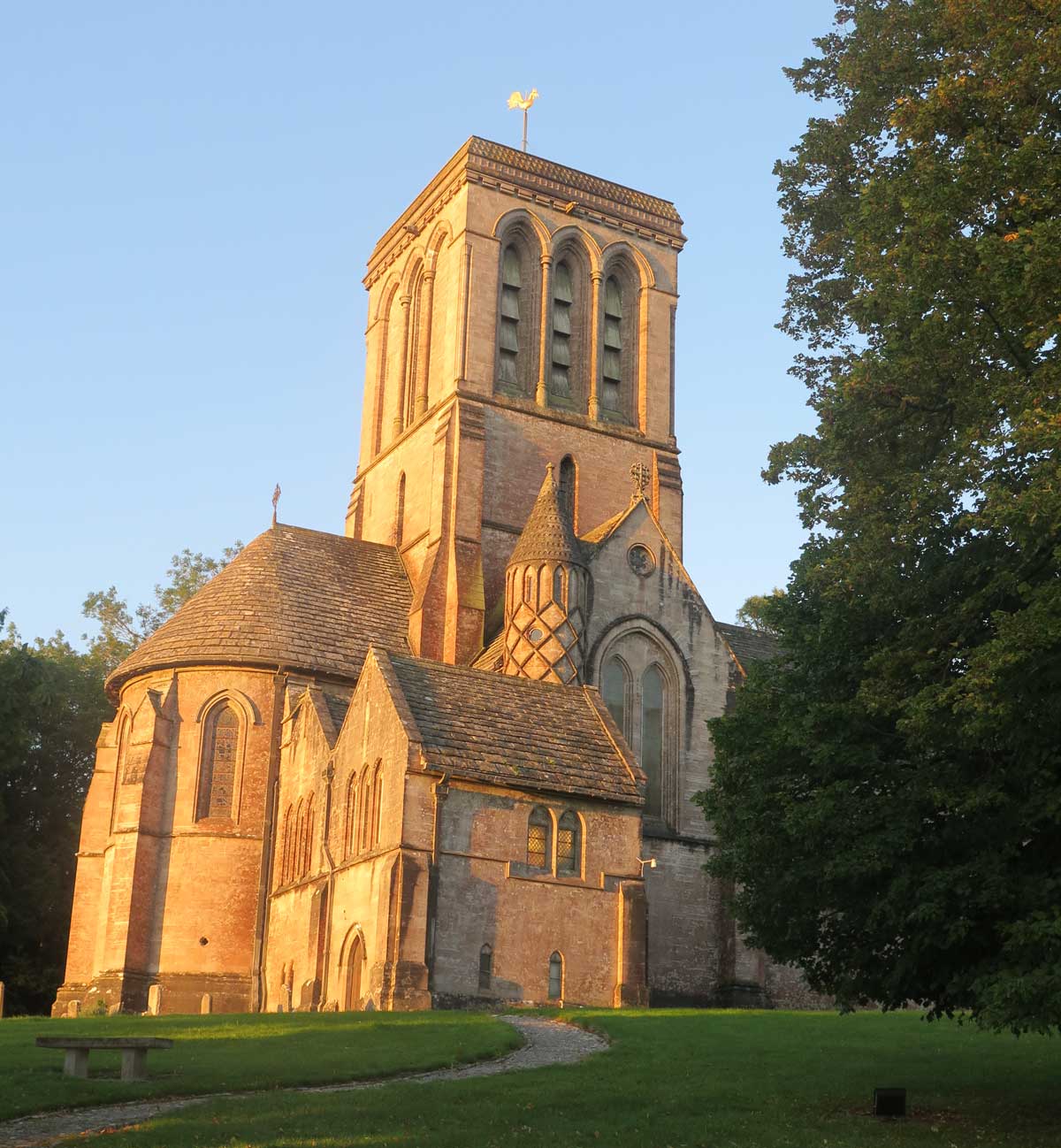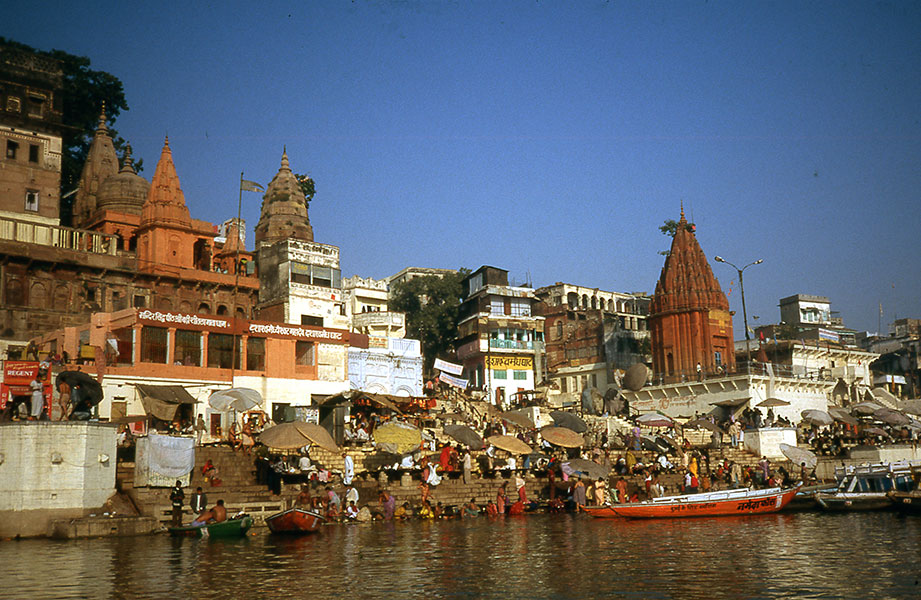20. A Walk To Weymouth 1
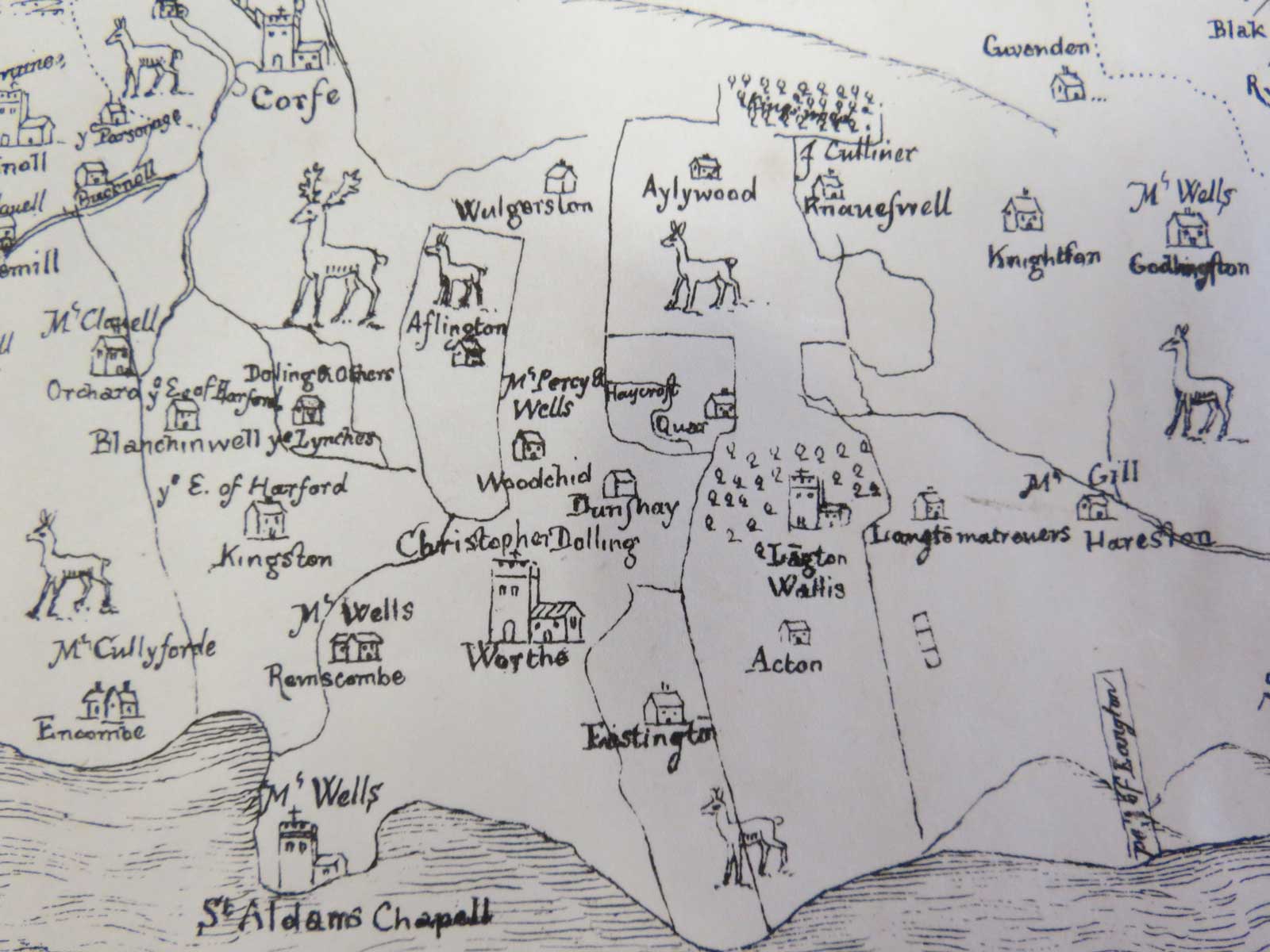
19. Dunshay: The House
September 3, 2020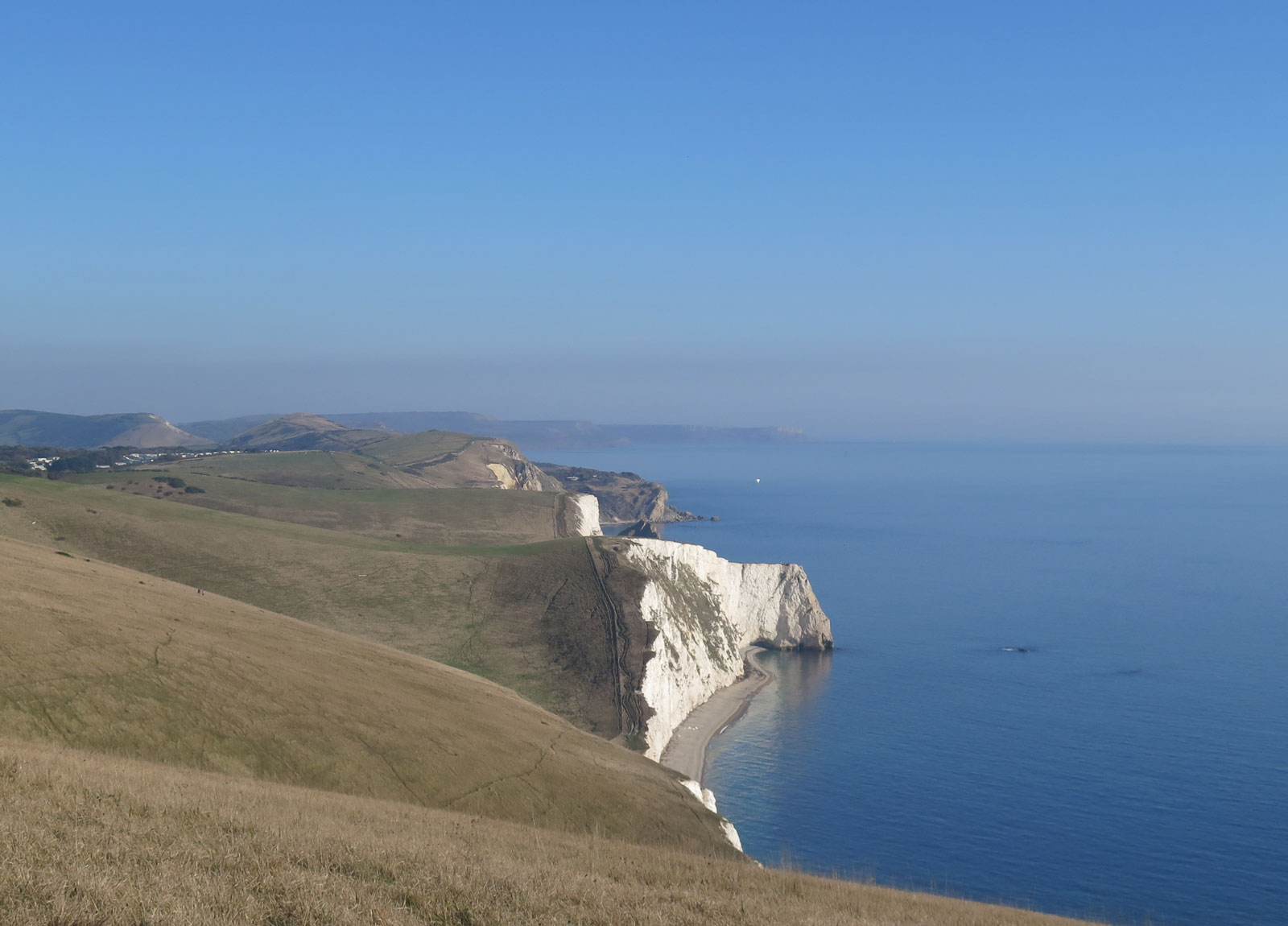
21. A Walk To Weymouth 2
September 17, 2020A planned to write on India this time but it's not healthy to spend every week in the past however recent! Yesterday's walk is a fresher. Since the first time with Peter in 1995, every year I walk the twenty miles of dramatic coast to Weymouth.
The caravan windows are misted with autumn condensation when, reinforced by a plateful of sausages, I leave, taking the westward path. The sun is not yet risen; in anticipation, the sky behind me is an intensifying yellow, the rest is utterly clear, last stars fading. The grass is sodden with dew. In a campsite dotted with tents three big motorbikes overshadow each owner's tiny tent. No one stirs. From the Afflington stile a sinking two-thirds moon floats above Kingston's Victorian church. The watchful eyes of two off-white llamas follow my progress up the hillside. An arid summer has dried a path through undergrowth which is usually a mud trap. Beyond, a pretty, russet roe deer nibbles leaves from a hawthorn bush. Noticing the intrusion, it turns big ears towards me then prances away. Morning rooks call as they fly out to feed. A collared dove coos, landing on a cottage chimney; invaders from Eastern Europe, common now, they only arrived in Britain when I was a boy.
There are two churches in Kingston. The small mediaeval one, its square tower boasting finials, comes first. Dukes of Portland are buried there but it has become a house. Fresh sunlight catches the newer church, a hilltop cathedral of painstaking masonry pink with algae; completed in 1880, it rises ungodly to dominate everything. George Street, a connection of mine by marriage, was architect. He also designed London's Law Courts; I discovered its hall of a hundred Purbeck marble shafts when there to give evidence in the Dunshay inheritance dispute. The village, too richly wooded, is shadowy. The road emerges into bare fields where a northwest wind strikes as I follow my long shadow past crewcut stubble. Migrating willow-chiffs flit along the fence.
A view through the chalk ridge glances towards Poole, its estuary harbour and Brownsea Island, my home briefly after leaving school. The painter, Turner crossed that estuary in September 1811 then, putting up in Corfe, followed the chalk ridge to Swanage, making meticulous tiny sketches in his Itinerary. Perfection! A few lines tell everything. Alas, the accompanying lines of verse show him to be a shit poet!
Sheep, some black-faced, graze the fields leading to the limestone scarp which still shades coastal farmland. High cloud begins to drift this way: they talk of showers. A group of white-arsed wheatears flit foolishly from post to post ahead of me. Smart-looking some land on sunlit ground, rock gently, then flit ahead again. A wiser bird would fly up and, anticipating my trajectory, land peacefully behind. The track is a public road but too rough for use. Groups of blue-glinting swallows, the adults pale apricot-chested against the off-white juveniles, head westwards, arrowheads low over the ground, bound for Africa. The view along a ragged cliff coast, contrasting shadow and light, is striking. Purple, wind-pewtered sea is crossed by two white-sailed yachts. The climbing sun hits Smedmore's chimneys. Philip, who inherited it, was indignant when a paper announced its sale. His family has held it since 1381, has no plan to move; the journalist meant neighbouring Encombe. Distant vessels, white dots lying off far Weymouth, are great, inactive cruise ships. They moor there sheltered from prevailing westerly gales: a powerful easterly could trouble them.
The track descends along a wall built from shapeless knobs of Portland cliffstone (Purbeck beds yield neater slabs) draped in blackberry-covered brambles. At 8 o'clock, crossing the road to Kimmeridge village, a passing driver is the first person of the day. In the valley Steeple's grey church-tower rises from trees. In the 16th century Edmund Lawrence, who owned that land, married Agnes Washington. Their joint coat of arms, incised into the church wall long before The Mayflower sailed, includes the stars and stripes of the Washington family. Old Glory's origin is older than America. During the war, American troops stationed nearby came to admire it; some left their names in the lead of the tower.
I gain the frontier of War Department land. The government, with the agreement of a patriotic landowner, borrowed Tyneham estate for wartime military training, dishonouring the promise to return it when peace came. The army remains. During firing practice it is closed, red flags fly. As boys we claimed the right to stray all over that stolen territory rich in wildlife. Now, frequently open to walkers, the lure has gone. Passing its gate, I cross a cheerful girl, a runner in a blue shirt. She lifts a hand 'Morning!' A sign announces that Tyneham village is closed: time of plague.
The moon fades at the fringe of high cloud. A rabbit, first of the day, hops off the path into gorse. What has become of them this year? They are few - have not even robbed my garden. A party of eight brightly-clad walkers, some with nordic walking sticks, approach behind a full-bearded man. With them the day has truly dawned. A pair of ravens glide silently just above the wall, land, watch my approach then fly off again. A happy young couple, having slept out at Ocean Seat, an old drystone bower with a wonderful view, were preparing breakfast. He glances at me defensively. Official? I give a friendly, complicit grin, with memories of waking nearby to glorious long-ago mornings.
Along the crest of Gad Cliff, above a tiny cove where we would sleep out, then down to Worbarrow Bay. Now, the worst ascent up to Flowers Barrow, on the westmost end of Purbeck's chalk ridge, a double-walled earthern fort completed during the Iron Age before falling to invading Romans. Gradually it disappears over the retreating cliff.
The path descends to Arish Mell, a little chalk-cut bay. There, a rowing-boat accident, in 1820, drowned a local rector and William Baring, of Baring's Bank, in front of their wives. A great storm wrecked the beginnings of a planned memorial; its granite blocks still lie there beside concrete 'dragons teeth' erected against wartime invasion. Purbeck's traditional frontier; passing it at 10.15, I face the next climb.

